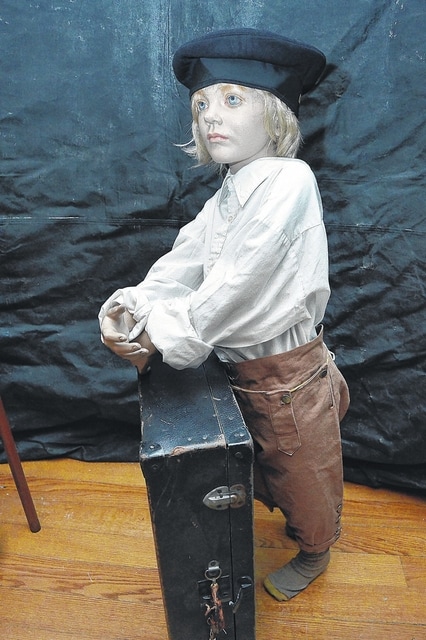
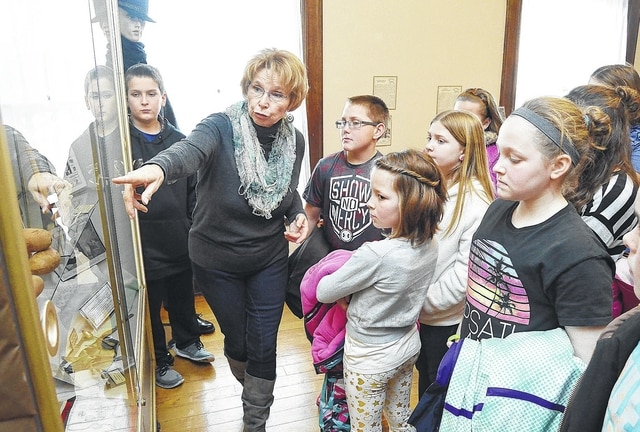
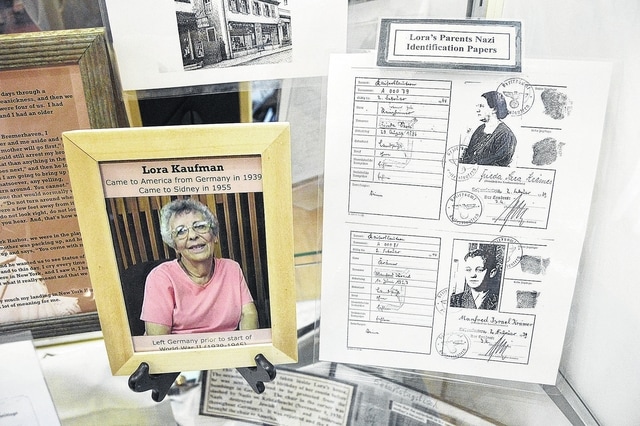
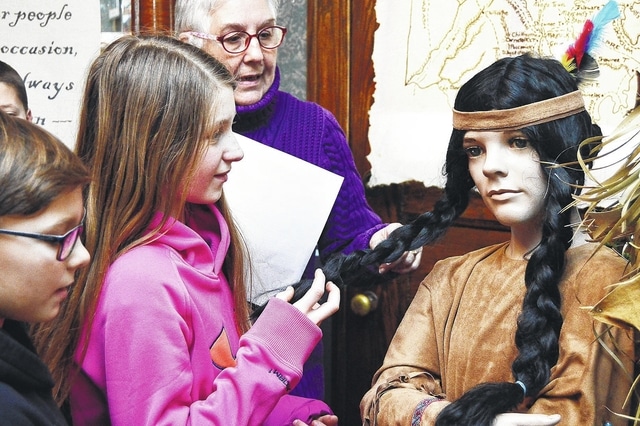
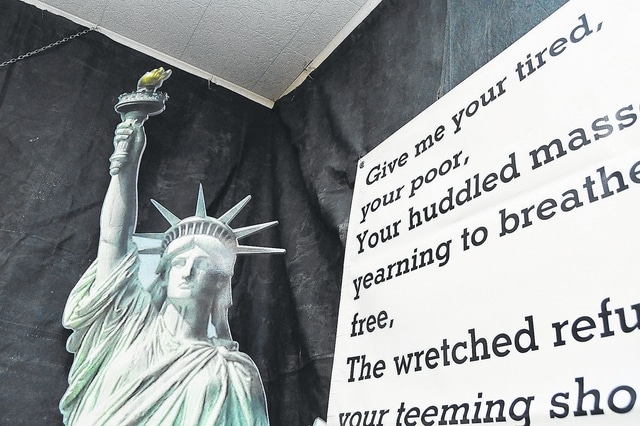
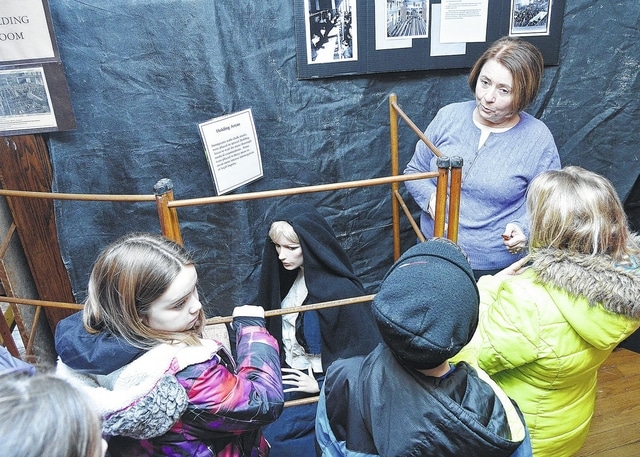
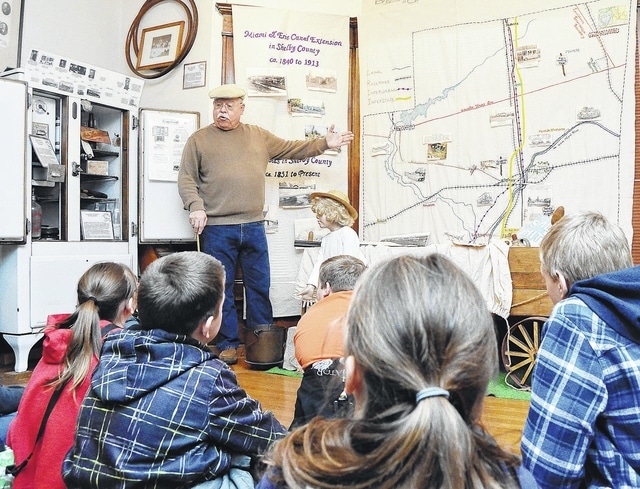
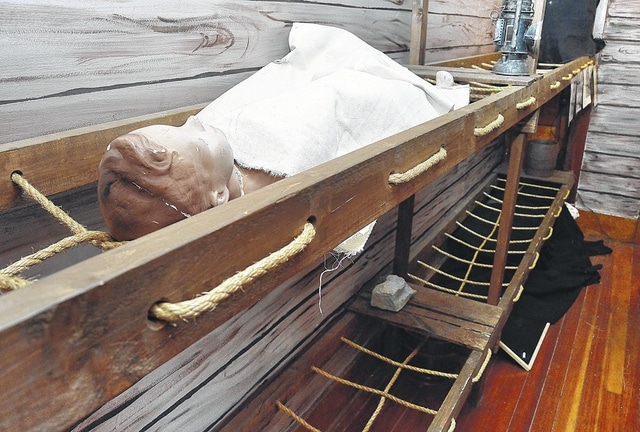
SIDNEY — Bunched together in large groups, people move on a crowded, steep stairway to find their bunks below decks of a ship that will take them to a better life.
Each family gets one, roughly 6-foot by 2-foot bunk to share. The bunks are stacked three high. There are no toilet facilities. As their quarters are deep within the ship, the people will see daylight for just one of every 24 hours during the seven- to 10-day ocean crossing. The only food they have is what they have carried with them. The only clothes they have are what they wear and, perhaps, a “good” outfit for when they arrive.
They are emigrating from Europe to the United States, leaving all they know behind them to find better economic opportunity or to escape religious persecution.
And it happens almost every day during February, right in downtown Sidney.
Fifth-grade students from throughout Shelby County schools role play to learn what their great- or great-great-grandparents lived through to come to the new world. The students are on school field trips to the Ross Historical Center to participate in an award-winning Shelby County Historical Society (SCHS) immigration program.
SCHS staff have built bunks in the Ross Center that are very close to the size of actual bunks. As the students move from the bunk area to the Ellis Island room, volunteers portray immigration officials.
“We reenact how they would write inspection symbols on the immigrants’ clothing (denoting possible illness),” said SCHS Director Tilda Phlipot. “We show how they went into holding cells or the hospital. The ship owners oversold passage by 100 tickets, so it was always overcrowded. Those living conditions bred many diseases.”
The “officials” display a button hook and tell students that it was used to pry up people’s eyelids to look for pink eye and a more serious disease that resulted in blindness. If any of the immigrants were going to be blind or had any other communicable diseases, they were sent back to their home countries. It didn’t matter if the children got though and the parents were sent back or if a family had to send one child back alone, Phlipot said. The officials were firm.
“If you were rich, you walked off the top of the ship, you walked right into the country, signed your papers and you were here. But that’s not the way it was if you were poor,” Phlipot added.
The local children see the myriad documents that immigrants had to have: inspection cards, declarations of intentions, birth certificates, signed oaths of allegiance to the United States and a dozen more.
In addition to role-playing their way through the Ellis Island processing of foreigners, the students hear first-hand accounts from local residents who actually made that journey themselves and from people whose parents were immigrants.
Students also tour an exhibit of immigration and resettlement artifacts from the countries which were the homelands of most of Shelby County’s ancestors.
A room is dedicated to Native American immigration and culture. While the immigration project and exhibit have been an annual activity of the SCHS since 2006, the Native American section is relatively new.
“We added it to match the schools’ curriculum,” said Phlipot. “We teach that the Native Americans were here before we were and show how they moved from place to place.”
Stephanie Everett, a fifth-grade social sciences teacher at Fairlawn Local Schools, finds that the field trip complements her lessons.
“In the fourth grade, they learn Ohio history and we study immigration then. In the fifth grade, we study the settlement of the Western Hemisphere. (The program) ties together fourth- and fifth-grade work. It shows kids that the pattern of immigration flows all the way through history,” she said.
In Janet Gumbert’s classroom at Sidney Middle School, fifth-graders address how ideas and events from the past have shaped the Western Hemisphere.
“Unique cultures have lasting effects. The stations (SCHS) has set up that students move through — they have correlated them to our Ohio standards,” Gumbert said. “It’s a really nice place to go because by the time we go in February, I’ve already taught these things. So it’s a review and some new things. It’s a really good correlation to what we teach.”
Everett said that through the program, her students get to see and experience things that aren’t available elsewhere.
“They see a lot of primary sources and artifacts that otherwise they would never see. The historical society puts on lots of programs for students and every time, that’s the case. That’s why I love it,” she said.
The project won an Ohio Historical Society (now Ohio History Connection) Award of Achievement in 2007.
The exhibit is open to the public Monday through Friday from 1 to 5 p.m. and Saturday from 9 a.m. to noon through March 15. Admission is free.










